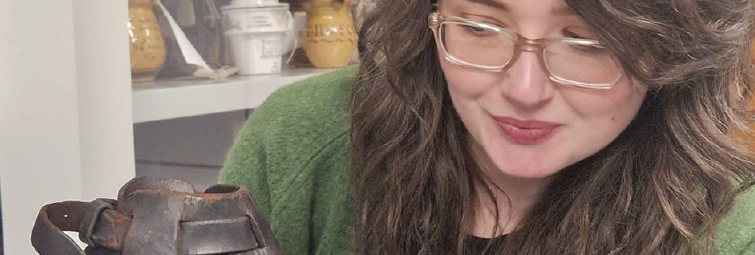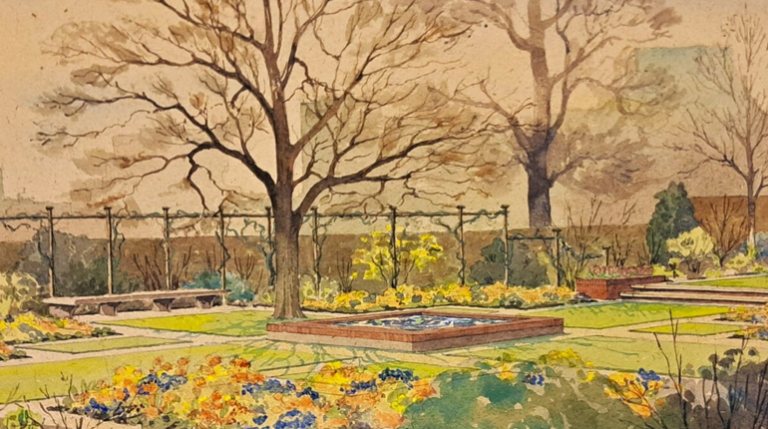‘The Poetry Survives’: Lindsay Anderson’s ‘Foot and Mouth’
-
Author
- josefinabravo
-
Published Date
- December 8, 2017

h
Written by Jack Thacker, Poet in residence.
Two months into my time as residency at the MERL, and I’ve discovered a wide range of objects and archival documents to inspire my poetry. The process, so far, has been one of gathering: which hand tool might prompt a poem, which diary or artwork can I mine for material? The following represents just one example of something specific that has already got me writing.
In 1955, the British Government commissioned a film on the subject of foot and mouth disease with the aim to ‘stress the need for early reporting of foot and mouth disease symptoms’ and ‘avoid giving the impression that the farmer could conduct his own diagnosis.’ The filmmaker behind the project was Lindsay Anderson, who is now known as the renowned British New Wave director of feature films such as This Sporting Life (1963), If (1968) and O Lucky Man! (1973) as well as for his work as a critic and in the theatre. The resulting documentary, Foot and Mouth (1955) (20 mins), forms part of The Ministry of Agriculture, Fisheries and Food Film Collection, which is comprised of 295 educational films on a variety of agricultural subjects available to view on request at The Museum of English Rural Life. Anderson’s contribution to the collection is not on the surface remarkable but upon closer inspection provides a valuable insight into the practice of the filmmaker at a formative stage in his career.
Two years previous to the making of Foot and Mouth, Anderson won an Academy Award for his film Thursday’s Children (1954) about the education of children at The Royal School of the Deaf in Margate. At about the same time, he directed another short film O Dreamland (1953), a stylised documentary about the Dreamland funfair in Margate, and which in 1956 was screened as part of the first ‘Free Cinema’ programme at the National Film Theatre. As an event and a movement, Free Cinema (co-founded by Anderson, its most important advocate and spokesperson) was a reaction against the trend of making documentaries in Britain at the time. The films, along with Anderson’s provocative accompanying manifestos, emphasised imperfection, the personal and the significance of the everyday.
According to Rebecca Vick, a curator at the BFI, ‘Foot and Mouth’s linear structure and instructional manner make it distinctly different from Anderson’s better-known work within the Free Cinema movement, and from those of his sponsored documentaries that hint at that movement’s more lyrical stylistic elements.’ Yet, there are aspects of the film that demonstrate Anderson’s talent and uncompromising artistic principles. The film’s narration may have been written by Anderson himself, but in the spirit of his Free Cinema experiments Foot and Mouth would be just as effective without its voiceover, as the combination of imagery and sound is its driving force. As in O Dreamland, Anderson’s use of recorded sound achieves a simple yet powerful effect. In one particularly upsetting sequence, the film shows the mass slaughter of livestock, but rather than concentrating on the killing itself, it focuses on the faces of farmers and a farmer’s wife as they flinch at the sound of gunshots. This is then followed by images of empty fields, barbed wire and trees while in the background there is the sound of howling winds.
In 1994, Anderson would write:
‘All the documentary films I made were, I hope, personal and subjective. It has always been my ambition to make films which can be described as poetic.’
Coming across Anderson’s film in the MAFF Collection, I was struck by the presence of a kind of poetry in amongst examples that are, on the whole, more prosaic in their style. This sparked an interest in the intersection between film language and poetic language, especially concerning ugly subject matter, a topic that I have attempted to explore in the poem below. Foot and Mouth may not form such an important part of Anderson’s back catalogue, but as he wrote of the work of his hero the documentary filmmaker Humphrey Jennings in 1982, to echo W. H. Auden, ‘the poetry survives.’
.
Foot and Mouth
dir. Lindsay Anderson (1955)
A farm somewhere in England, sometime
in Autumn. This is Bury Farm,
its crops, livestock (soon to be buried).
It’s November now. How to read
the signs but not commit yourself –
leave that to officials. For this calf,
too late. The whole thing’s deadly efficient:
a touch / a tyre / a train / a footprint.
.
The poetry survives. It’s not in the voice
explaining protocol, it lies in the face
of a woman watching (shots off-screen),
shot of a herd, of a vet, of a gun,
shot of an empty field on a hill,
shot of a farmer shot of it all.
.
A short clip of Foot and Mouth is available to view via the BFI.
If you would be interested in visiting The MERL to watch any of the available films from the MAFF Collection, or to explore the rest of our extensive archive please contact us using the email address merl@reading.ac.uk.





